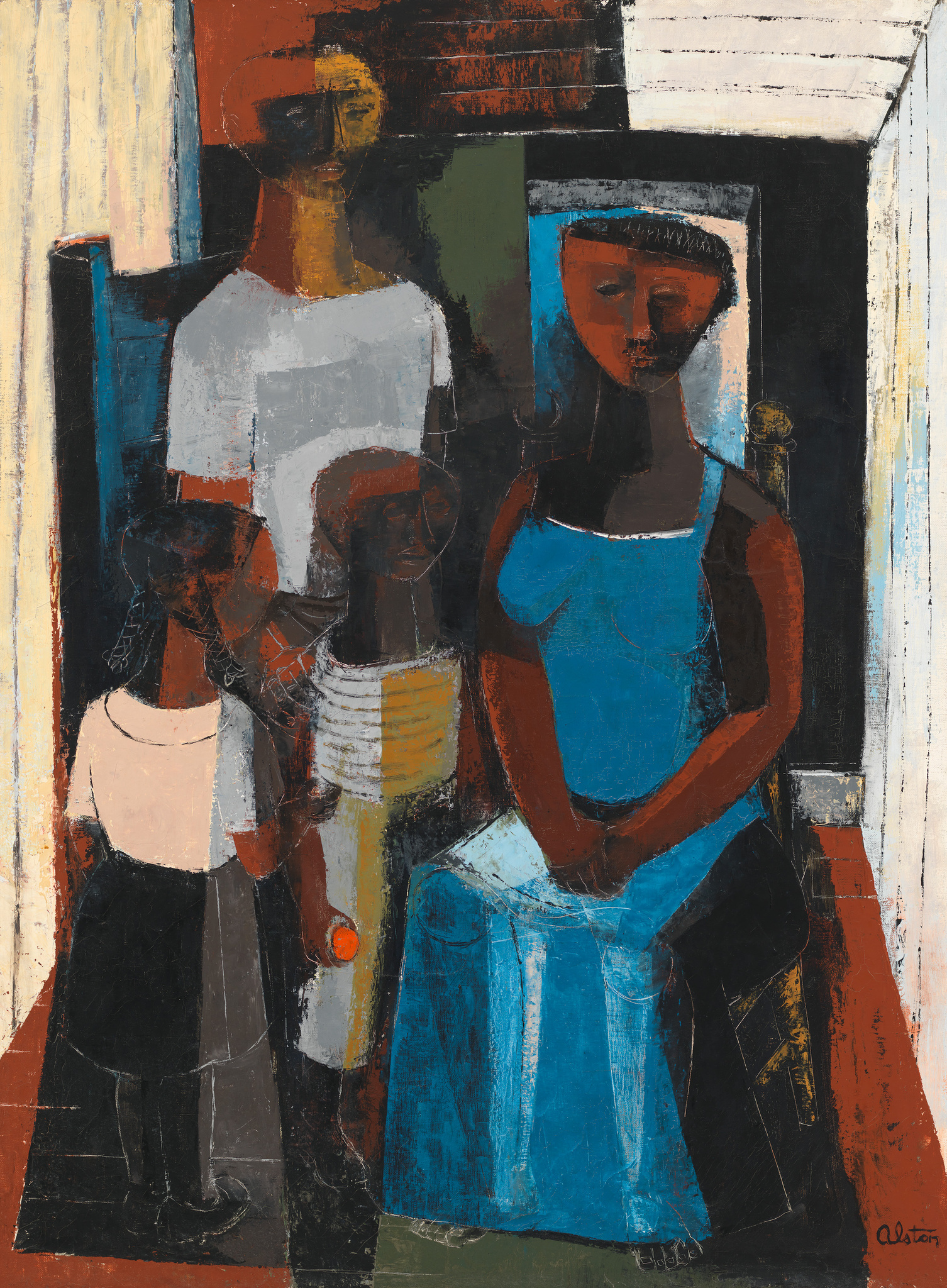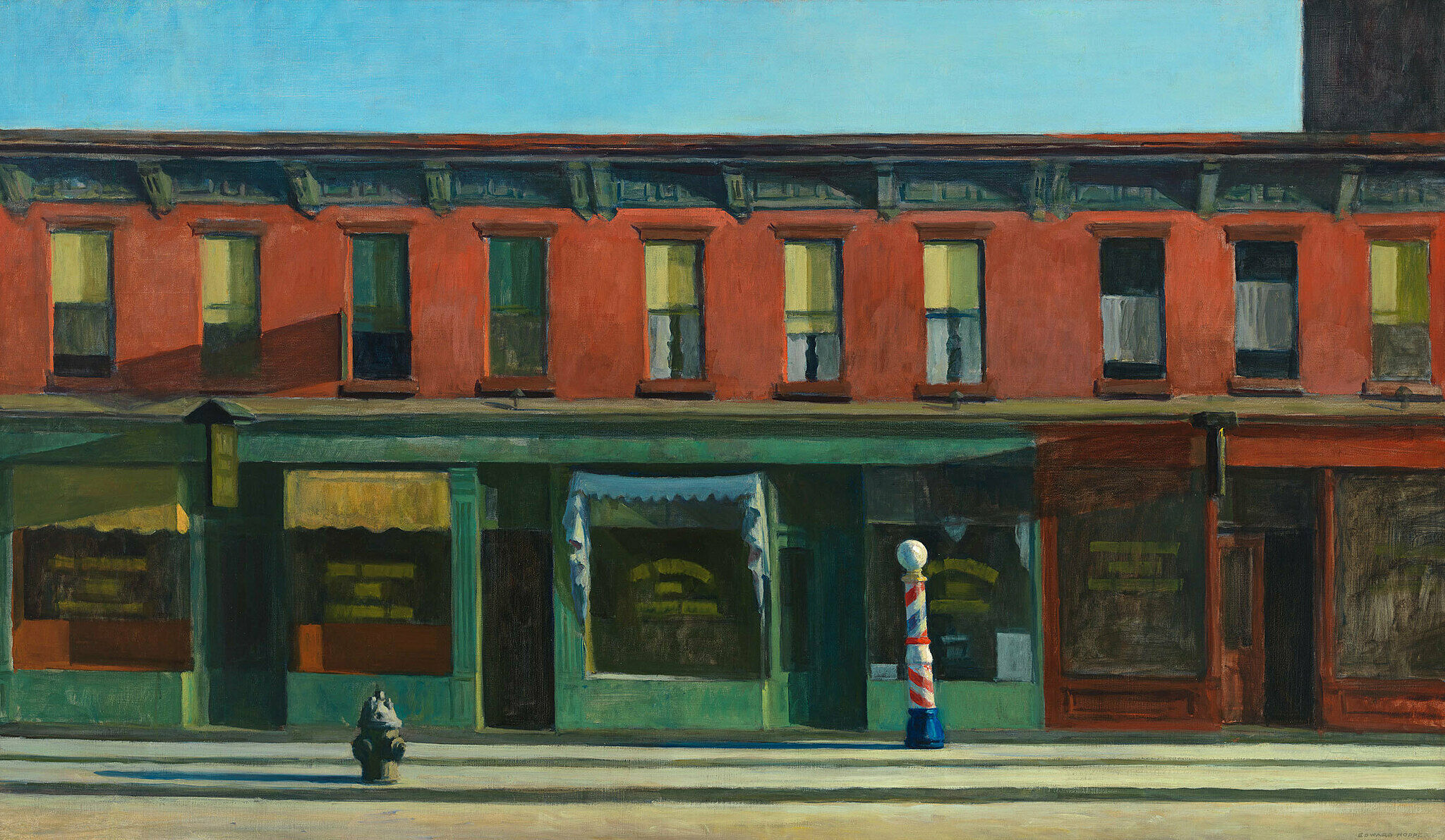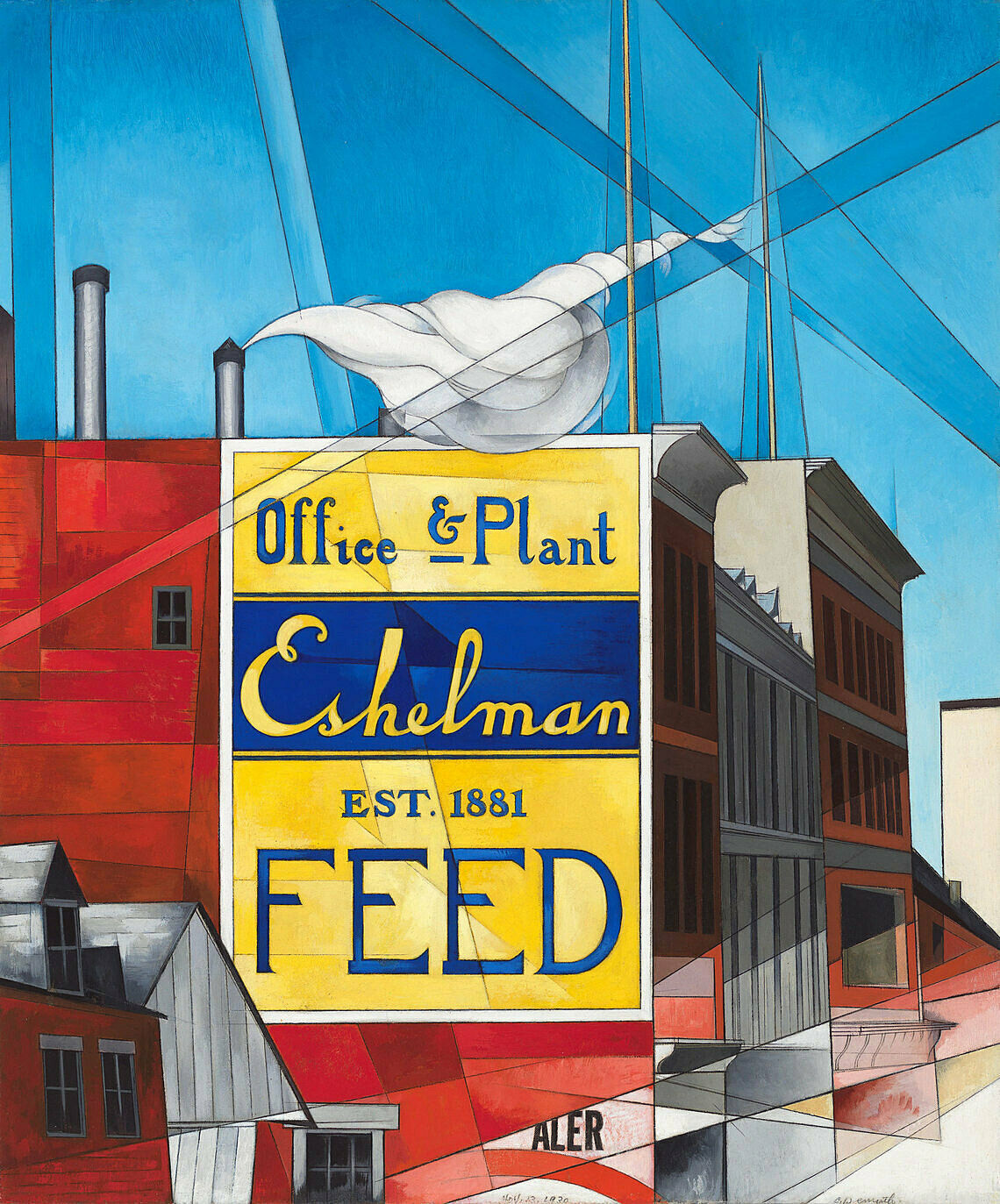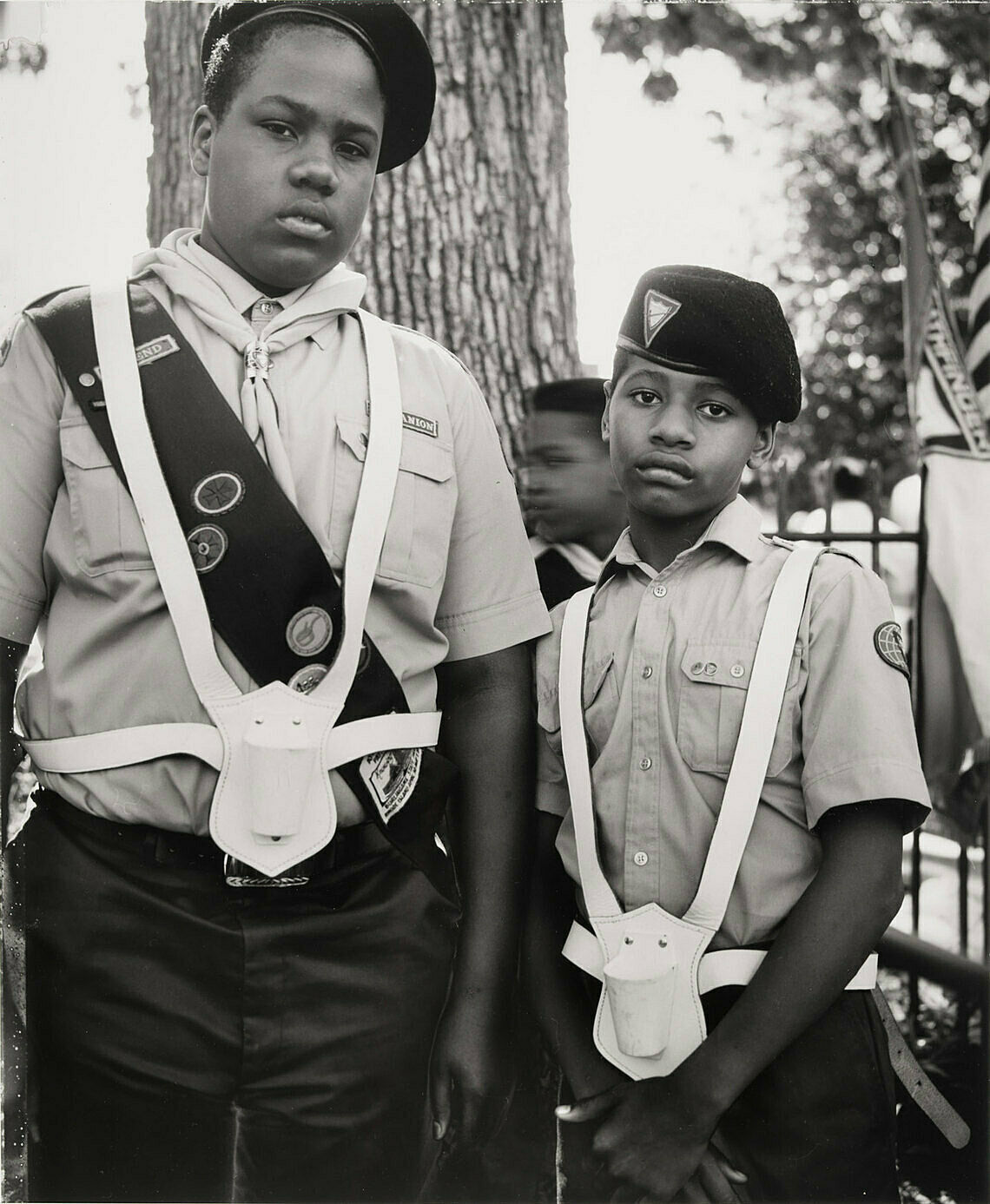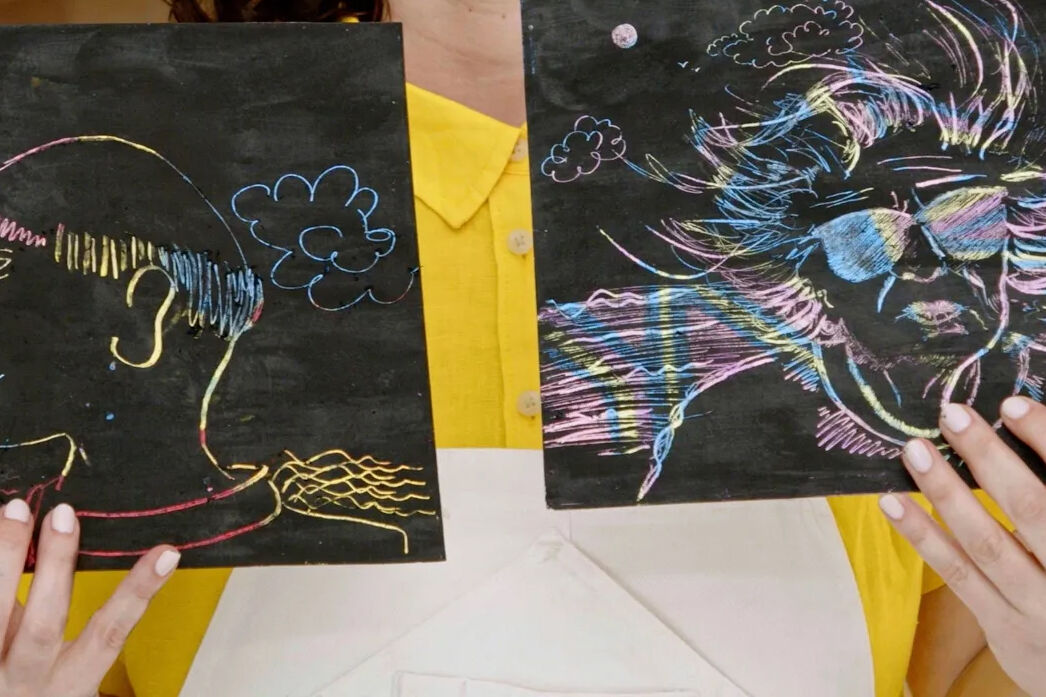Not on view
Date
1955
Classification
Paintings
Medium
Oil on canvas
Dimensions
Overall: 48 3/16 × 35 13/16in. (122.4 × 91 cm)
Accession number
55.47
Credit line
Whitney Museum of American Art, New York; purchase, with funds from the Artists and Students Assistance Fund
Rights and reproductions
© artist or artist's estate
Visual description
The Family is an oil painting on a medium-sized rectangular canvas, measuring around 48 by 35 inches, and was made in 1955. The work features four family members, two adults and two children, posing all together. The family members are closely framed by pale paneled walls to their left and right. The tightness of the composition, proximity of each family member to one another, and framing of the family through their home's wall suggests that they are in a small space with low ceilings.While the work is figurative and can be recognized as a family portrait, the painterly style is defined by fragmented, geometric blocks of color.
Moving clockwise from the upper left corner, the father sits statuesque in a tall-backed chair. To the right sits the mother, who wears a blue dress. She is seated in a three-quarters angle and her face is framed by a vertical window in the background. Her blue dress marks a focal point in the composition as the rest of the painting is defined primarily by warm tones of cream, mustard yellow, and umber.In the lower left corner, two two small daughters stand, one with her back turned to us. This child’s hair is in two braids, and her sister appears to gaze towards her mother. The sister wears a striped shirt or dress whose horizontal stripes mimic the fingers of the father’s hand, which rests on her shoulder.
Charles Henry Alston painted each member of this family’s skin in warm, dark hues, signaling that this is an African American family. Each figure's facial features are defined only by subtle, thin lines that carve out each person's eyes, nose, and mouth. The geometric quality of their faces and lack of detail in their features does not provide the viewer with a life-like image of each member of the family. Instead, each face has a mask-like quality that references modernist, cubist portraits of the early to mid-twentieth century.
Videos
Audio
-
Charles Henry Alston, The Family, 1955
In Where We Are (Kids, Spanish)
0:00
Charles Henry Alston, The Family, 1955
0:00
-
0:00
Charles Henry Alston, The Family, 1955
0:00
Narrator: Charles Henry Alston lived in Harlem in the mid-1900s. He often focused on his community. Here, he’s pictured a couple of parents with their two children.
He created the image using a combination of big shapes and very skinny lines, almost like a drawing on top of an abstract painting. Instead of just using paintbrushes, he chose to apply the paint with palette knives—a tool shaped a like a spatula—giving the piece a blocky feel.
Who do you think these people were? It’s kind of hard to tell, isn’t it? Their faces are pretty abstract, and their expressions are hard to make out. Alston wasn’t so focused on the individuals here. He was more interested in the idea of a family, and the feeling of stability and love that comes with it. As you look at the painting, see if you can find ways that he made the family members appear connected to each other.
-
0:00
Charles Henry Alston, The Family, 1955
0:00
Narrator: Charles Henry Alston lived in Harlem in the mid-1900s. He often focused on his community. Here, he’s pictured a couple of parents with their two children.
He created the image using a combination of big shapes and very skinny lines, almost like a drawing on top of an abstract painting. Instead of just using paintbrushes, he chose to apply the paint with palette knives—a tool shaped a like a spatula—giving the piece a blocky feel.
Who do you think these people were? It’s kind of hard to tell, isn’t it? Their faces are pretty abstract, and their expressions are hard to make out. Alston wasn’t so focused on the individuals here. He was more interested in the idea of a family, and the feeling of stability and love that comes with it. As you look at the painting, see if you can find ways that he made the family members appear connected to each other.
Exhibitions
Installation photography
-
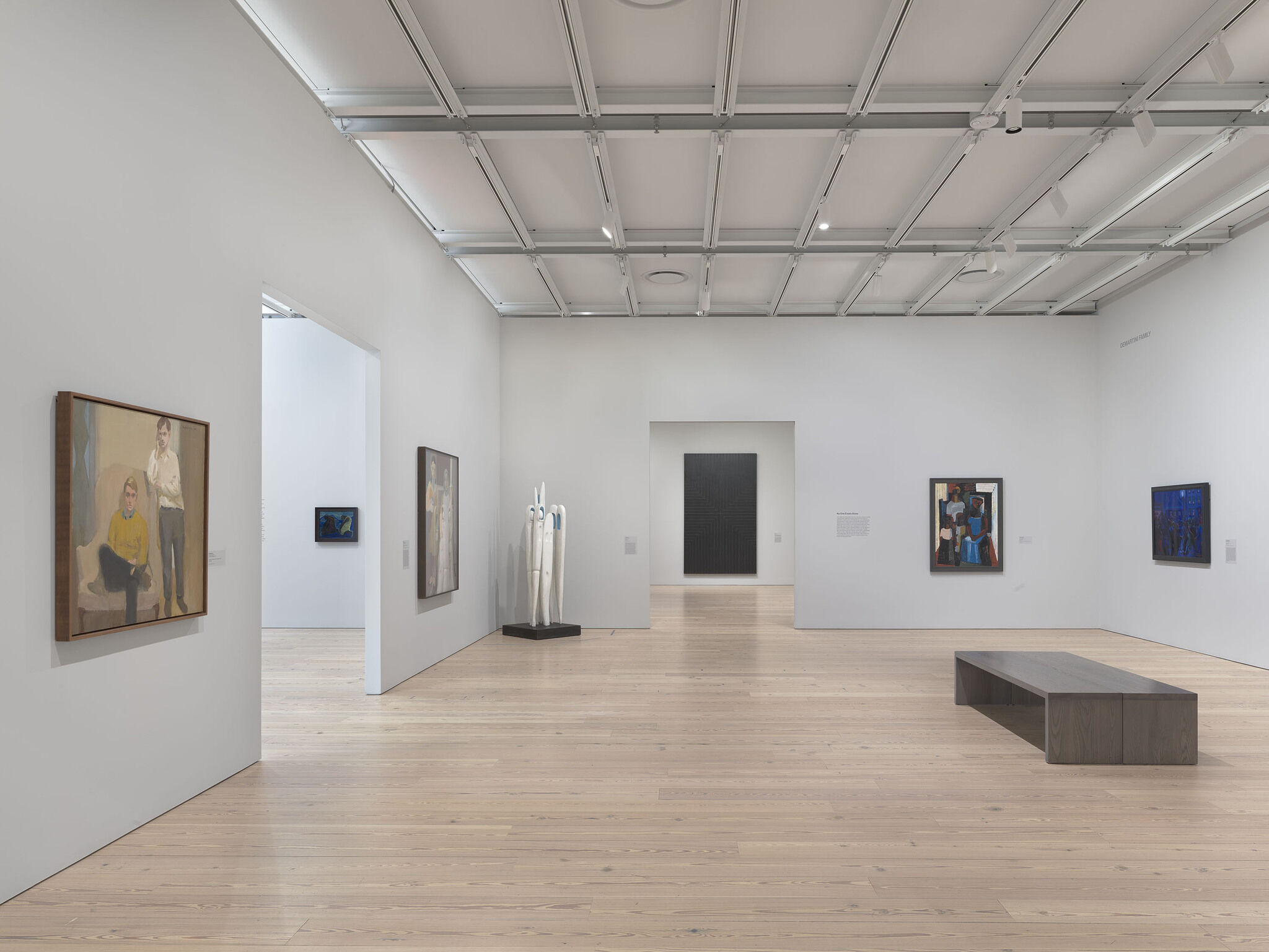

Installation view of Where We Are: Selections from the Whitney’s Collection, 1900–1960 (Whitney Museum of American Art, New York, April 28, 2017–June 2, 2019). From left to right: Fairfield Porter, Portrait of Ted Carey and Andy Warhol, 1960; Jacob Lawrence, War Series: Prayer, 1947; Arshile Gorky, The Artist and His Mother, 1926–c.1936; Louise Bourgeois, Quarantania, 1941; Frank Stella, Die Fahne hoch!, 1959; Charles Henry Alston, The Family, 1955; Archibald Motley, Jr., Gettin’ Religion, 1948. Photograph by Ron Amstutz
From the exhibition Where We Are: Selections from the Whitney’s Collection, 1900–1960

